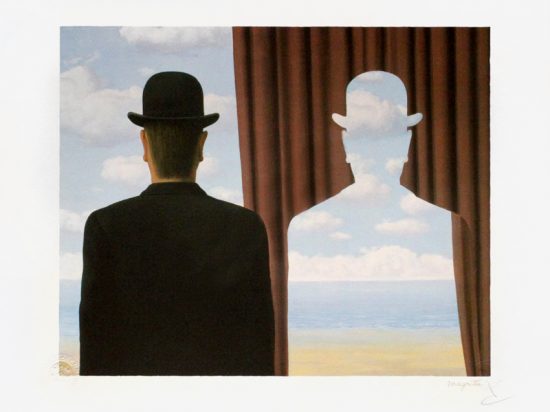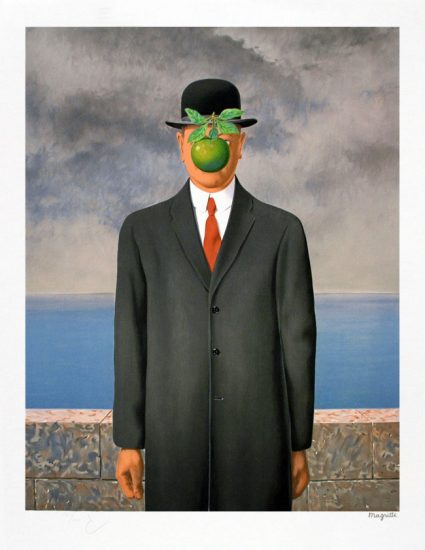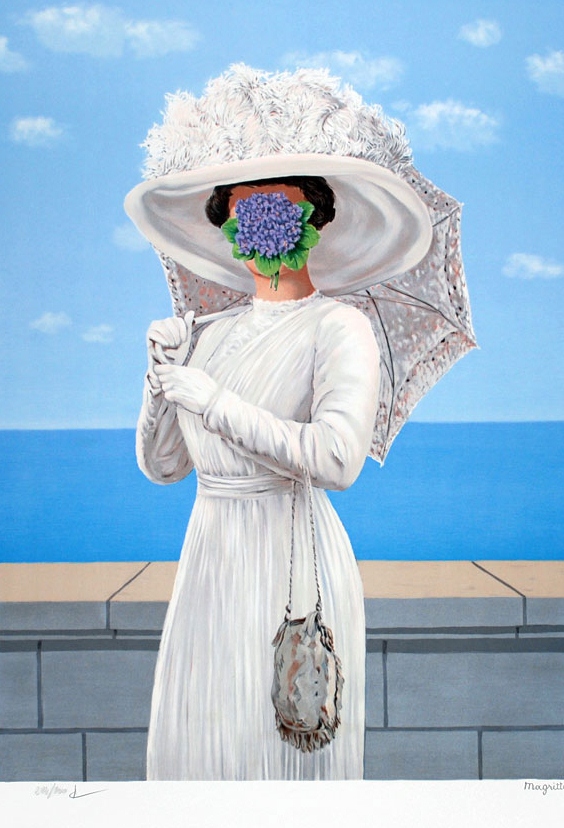
René Magritte: Elementary
- René Magritte
LESSON PLAN: RENÉ MAGRITTE
Overview: Students will learn about René Magritte and his Surrealist style. They will examine 4 works of art by Magritte. Students will then create their own portraits in the style of Magritte.
Age Group: Elementary School (Grades 3-5)
State Standards:
Visual Arts
Standard 1: Students perceive and respond to works of art, objects in nature, events, and the environment. They also use the vocabulary of the visual arts to express their observations.
Standard 2: Students apply artistic processes and skills, using a variety of media to communicate meaning and intent in original works of art.
Standard 3: Students analyze the role and development of the visual arts in past and present cultures throughout the world, noting human diversity as it relates to the visual arts and artists.
Length of Lesson:
One 90 minute lesson
Objectives:
Students will be able to:
- Define the term Surrealism and discuss the beliefs/principles behind this movement
- Relate cultural influences and historical elements to the artwork that they view, focusing on the life and style of René Magritte
- Create works of art in the style of René Magritte
Materials:
- 4 examples of artwork by René Magritte
- Paper
- Colored pencils, crayons, markers (tools to draw with)
Lesson Procedure:
- Discuss the life of René Magritte
- Born in 1898 in Belgium
- Magritte’s mother passed away when he a young boy; this left a lasting influence on his artwork
- In 1924, Miro became associated with Surrealists
- Define Surrealism: Art movement that begin in the 1920s
- Often associated with images seen in dreams
- Poets/writers initiated this art movement which then spread out to the visual arts
- Characteristics:
- Explore the dream state
- Incorporate elements of chance and spontaneity
- Emphasize the mysterious, strange, fantastic, mythological
- Explain Magritte’s version of Surrealism
- Witty/thought provoking images
- Challenged our preconditioned thoughts of reality
- Places ordinary objects in an unusual context
- Gives new meaning to familiar things
- Show the following 5 works:
- The Great War, 1964
- The Ready-Made Bouquet, 1957
- Heartstring, 1960
- The Voice of Blood, 1959
- For each work, provide brief background information on the work/thought process behind the piece.
- Continue with questions such as the following:
- What is going on here?
- What do you see that makes you say that?
- How did the artist use line/shape/form/color to create this image?
- What do you think that Magritte was trying to say in this work?
- Do you like this piece? Why or why not?
- Have the students sketch a self portrait. Instead of an apple or bouquet of flowers, have them choose a present day object to cover the face. The object should be about as large as the face, so nothing too elaborate or too large or small. Some options might include an ipod, cell phone, candy, lightbulb, etc. When they are finished sketching, they can color it in or paint it in using your choice of media. When necessary, students can outline the covering object with a fine liner.
| IMAGE | ARTIST | TITLE |
 |
René Magritte | The Great War |
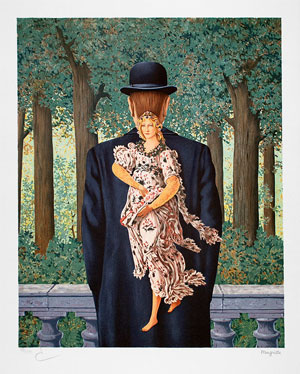 |
René Magritte | The Ready-Made Bouquet |
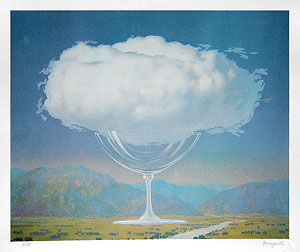 |
René Magritte | Heartstring |
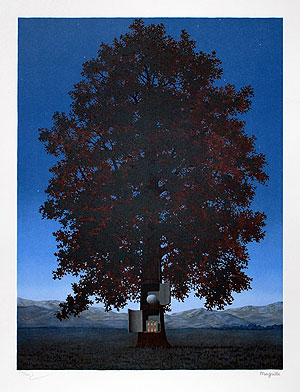 |
René Magritte | The Voice of Blood |


